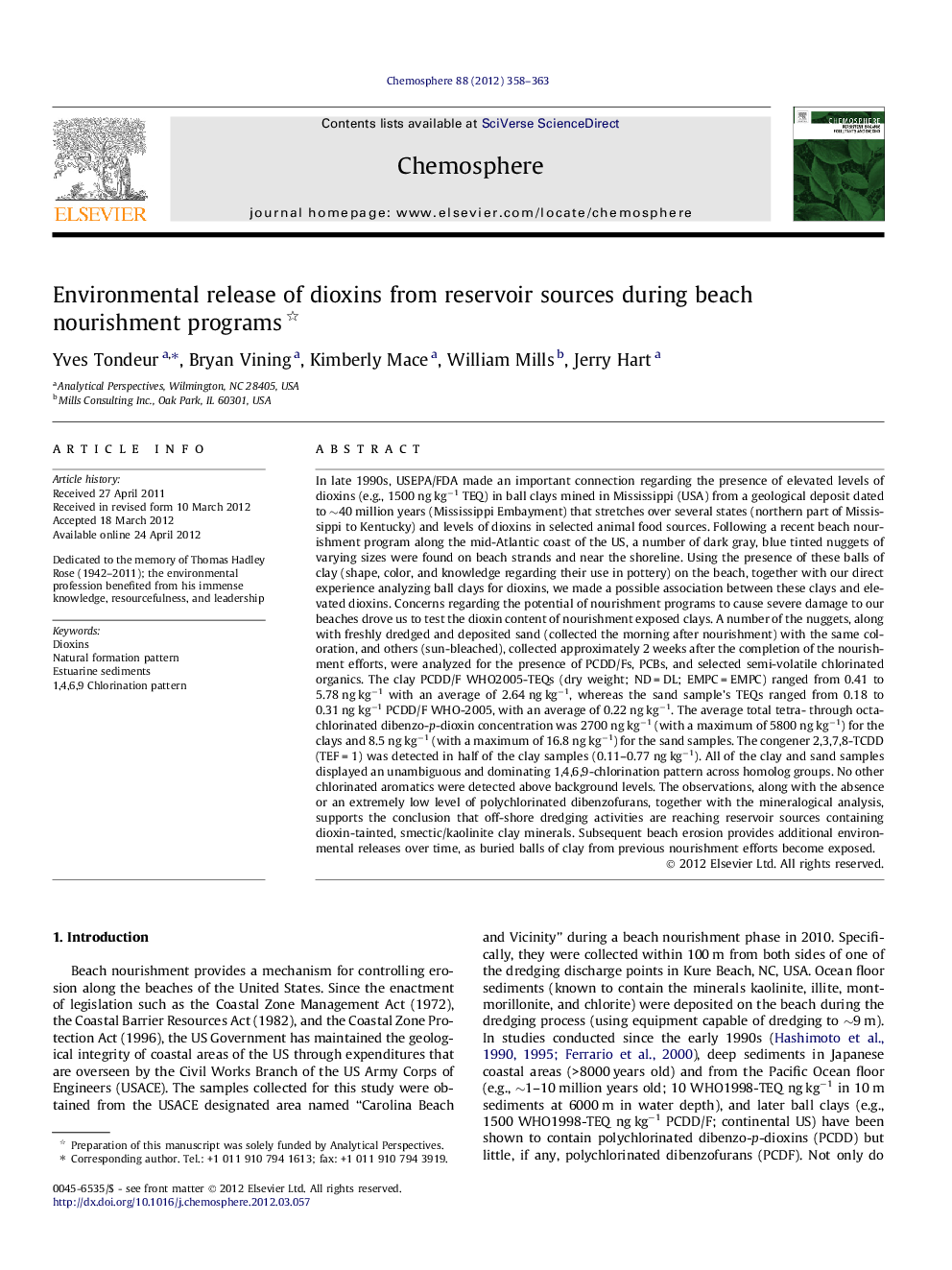| کد مقاله | کد نشریه | سال انتشار | مقاله انگلیسی | نسخه تمام متن |
|---|---|---|---|---|
| 4410152 | 1307531 | 2012 | 6 صفحه PDF | دانلود رایگان |

In late 1990s, USEPA/FDA made an important connection regarding the presence of elevated levels of dioxins (e.g., 1500 ng kg−1 TEQ) in ball clays mined in Mississippi (USA) from a geological deposit dated to ∼40 million years (Mississippi Embayment) that stretches over several states (northern part of Mississippi to Kentucky) and levels of dioxins in selected animal food sources. Following a recent beach nourishment program along the mid-Atlantic coast of the US, a number of dark gray, blue tinted nuggets of varying sizes were found on beach strands and near the shoreline. Using the presence of these balls of clay (shape, color, and knowledge regarding their use in pottery) on the beach, together with our direct experience analyzing ball clays for dioxins, we made a possible association between these clays and elevated dioxins. Concerns regarding the potential of nourishment programs to cause severe damage to our beaches drove us to test the dioxin content of nourishment exposed clays. A number of the nuggets, along with freshly dredged and deposited sand (collected the morning after nourishment) with the same coloration, and others (sun-bleached), collected approximately 2 weeks after the completion of the nourishment efforts, were analyzed for the presence of PCDD/Fs, PCBs, and selected semi-volatile chlorinated organics. The clay PCDD/F WHO2005-TEQs (dry weight; ND = DL; EMPC = EMPC) ranged from 0.41 to 5.78 ng kg−1 with an average of 2.64 ng kg−1, whereas the sand sample’s TEQs ranged from 0.18 to 0.31 ng kg−1 PCDD/F WHO-2005, with an average of 0.22 ng kg−1. The average total tetra- through octachlorinated dibenzo-p-dioxin concentration was 2700 ng kg−1 (with a maximum of 5800 ng kg−1) for the clays and 8.5 ng kg−1 (with a maximum of 16.8 ng kg−1) for the sand samples. The congener 2,3,7,8-TCDD (TEF = 1) was detected in half of the clay samples (0.11–0.77 ng kg−1). All of the clay and sand samples displayed an unambiguous and dominating 1,4,6,9-chlorination pattern across homolog groups. No other chlorinated aromatics were detected above background levels. The observations, along with the absence or an extremely low level of polychlorinated dibenzofurans, together with the mineralogical analysis, supports the conclusion that off-shore dredging activities are reaching reservoir sources containing dioxin-tainted, smectic/kaolinite clay minerals. Subsequent beach erosion provides additional environmental releases over time, as buried balls of clay from previous nourishment efforts become exposed.
► Beach nourishment clays display a unique dioxin chlorination pattern.
► No other chlorinated aromatics detected above background levels.
► Off-shore dredging reaches reservoir sources containing dioxin-tainted clays.
Journal: Chemosphere - Volume 88, Issue 3, July 2012, Pages 358–363